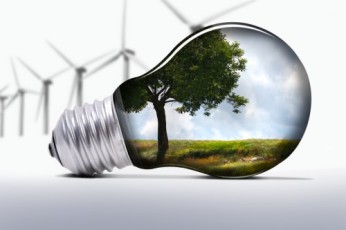
By: Ryan Suit,
If you have ever wanted to be paid to do less than you are doing right now, then you might be a fan of “demand response.” Demand response refers to the concept of paying electricity consumers to not use electricity at certain times.[1] Currently, most demand response participants are large commercial industries, and residential participation is still small. But as advancements in technology allow more people and businesses to take part in demand response, paying consumers to not use electricity will have a lot of benefits for consumers, the electric grid, and the environment.[2]
Demand response entails less energy being consumed, which means less energy needs to be produced. For one, this decreases the costs to consumers because they use less energy.[3] Second, demand response allows the grid to be more reliable because there is a lesser likelihood of overload on the grid.[4] Third, it also decreases the amount of carbon dioxide produced by electricity generators who use fossil fuels.[5] Many power plants that use fossil fuels are both inefficient and expensive to operate, so are only turned on when demand for electricity is at its peak. Demand response can prevent the need for these types of plants, and therefore prevent them from producing carbon dioxide pollution, because it helps to balance the supply and demand for electricity by using less energy, rather than producing more.
The big question for demand response is, “Who gets to regulate it?” Section 201 of the Federal Power Act gives the Federal Energy Regulatory Commission (FERC) the power to regulate interstate transmission of wholesale electricity sales.[6] While FERC was given the authority to regulate interstate electricity and wholesale rates, states were left to regulate intrastate electricity sales and retail sales to end-users.[7] Almost one year ago, the Supreme Court held in Learjet that federal natural gas laws do no preempt state laws that regulate any phase of natural gas production.[8] By holding that federal laws did not preempt state regulation of an energy industry, Learjet signaled that the Supreme Court might be in favor of allowing states to regulate demand response.[9] Earlier this year the Court clarified its stance on demand response in FERC v. EPSA.[10] In that case, the Supreme Court confirmed that FERC has the ability to require firms that transmit energy on the grid to accept bids from demand response companies.[11] This makes demand response a much more viable competitor to energy generators, and also creates more of the benefits described above: lower costs, more reliability, and less pollution. Though state regulatory commissions still have the ability to regulate demand response by prohibiting customers in their states from participating in demand response markets[12], the holding in FERC v. EPSA may indicate that “veto” power could be taken away, and FERC might soon have more power to increase demand response schemes.
Demand response is becoming more than just an energy concept, and is gaining more traction both economically and legally. More lawsuits dealing with demand response are likely to be litigated in the near future, but the Supreme Court’s recent rulings show that demand response could be in your near future as well.
[1] See Joel Eisen, FERC v. EPSA and the Path to a Cleaner Energy Sector, 40 Harvard Environmental Law Review 1 (2016).
[2] Id. at 2.
[3] Id.
[4] Id.
[5] Id.
[6] Federal Power Act § 201
[7] Id.
[8] See Oneok, Inc. v. Learjet, Inc.
[9] Ashley Davoli, Demand Response: The Consumer’s Role in Energy Use, Rich. J.L. & Tech. (April 26, 2015) http://jolt.richmond.edu/index.php/demand-response-the-consumers-role-in-energy-use/.
[10] See Federal Energy Regulatory Commission v. Electric Power Supply Assoc., 136 S.Ct. 760 (2016)
[11] Id. at 763-764.
[12] Id. at 779-780.
